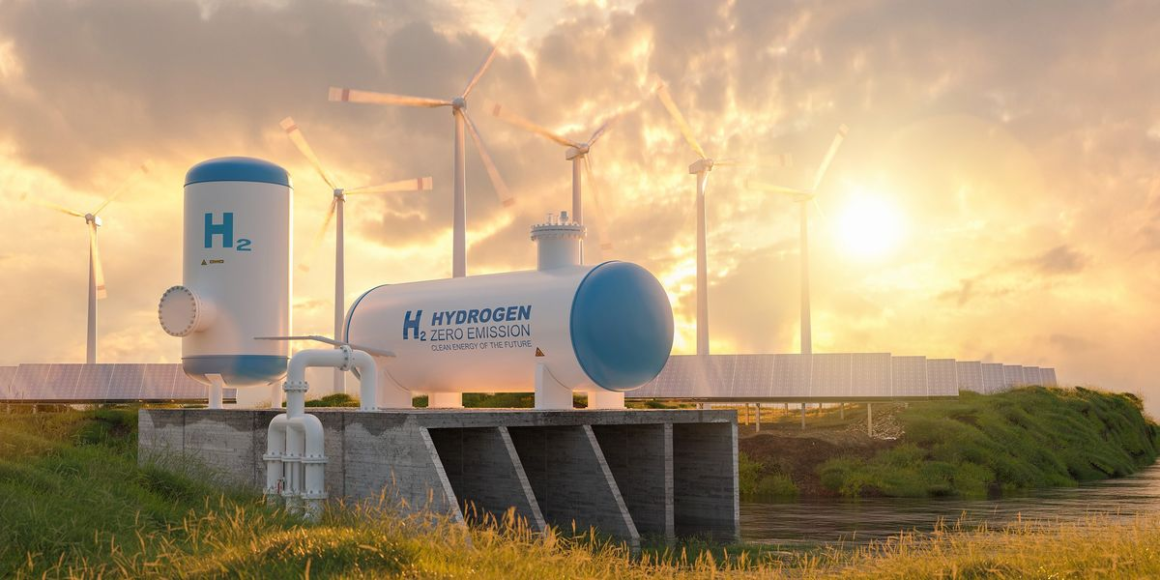Solar, wind and nuclear get a lot of press when it comes to clean energy sources, but what about hydrogen?
More powerful hurricanes, fiercer fire seasons and deadlier floods have spurred a much wider worldwide push toward decarbonization. As a result, governments and industry leaders have committed to adopting rigorous carbon emission reduction targets for 2050. Amidst this backdrop, the market for hydrogen as a strategic commodity in the transition to a cleaner global economy is taking shape.
These factors and more have inventors asking, “Is hydrogen a good investment?” Here the Investing News Network takes a look at what hydrogen is used for, the types of hydrogen, the hydrogen outlook and how to invest in the hydrogen market.
As it produces no carbon emissions, RBC says hydrogen has the ability to replace fossil fuels in:
The long-haul transportation sector has proven especially difficult to decarbonize due to the excessive weight of lithium-ion batteries and their insufficient operating range. Hydrogen offers a light-weight alternative that can go the distance needed to bring the transportation sector closer to net-zero emissions.
There are two hydrogen-based technologies emerging to serve the needs of this industry: hydrogen-fueled engines, which operate in much the same way as diesel- or gasoline-fueled ones; and hydrogen fuel cells, which produce electricity by combining hydrogen and oxygen across an electrochemical cell.
Before hydrogen can be considered a truly carbon-free input, the processes by which hydrogen itself is produced needs a cleaner, greener solution. It is this need that holds the most opportunity for investors as technology progresses for the production, storage and utilization of what is known as green hydrogen.
Green hydrogen is considered a clean energy source because it is produced via electrolysis using renewable energy sources, which can include solar, wind or hydroelectricity. Hydrogen produced using solar energy or nuclear power is also sometimes referred to as yellow hydrogen.
The color classifications for hydrogen encompass a whole rainbow of shades, but the most notable in the order from most to least carbon-emitting are brown, gray, blue and green.
“We believe natural gas may become a bridge fuel that helps green hydrogen become a reality,” stated RBC Capital Markets Vice President and Portfolio Analyst Kelly Bogdanova. She also sees hydrogen production using electricity derived from renewables and nuclear energy representing a greater share of the market in the years ahead.
This impressive growth projection is attributed to proactive governments focused on zero-carbon emissions and supporting the development of the hydrogen sector through investments in infrastructure. Rising adoption of hydrogen fuel cell vehicles, the development of electrolysis technologies and the lowering cost of renewable energy production are also highly supportive of the hydrogen market.
Deliotte’s aforementioned 2023 market report projects the green hydrogen market overtaking the value of the liquified natural gas market by 2030 and reaching US$1.4 trillion by 2050. By that same year, global trade in hydrogen could generate more than US$280 billion annually in export revenues. “If policymakers and business leaders provide decisive support of the market, green hydrogen can outcompete carbon-intensive hydrogen production in less than 10 years,” said Jennifer Steinmann, Deloitte Global sustainability and climate practice leader.
Most of today’s current green hydrogen projects are in the pre-commercial phase with limited electrolyzer capacities. One of the main challenges in advancing green hydrogen technologies is the cost, but analysts believe this will become less of an issue.
“(The) most attractive production markets for green hydrogen are those with abundant, low-cost renewable resources,” the firm noted, naming the Middle East, Africa, Russia, the US and Australia.
Looking forward, PwC analysts see “moderate, steady” growth in hydrogen demand through 2030 as many niche applications take hold in the industrial, transport, energy and buildings sectors. More importantly, the firm projects a decrease in hydrogen production costs by about 50 percent through 2030.
Another challenge to the wider adoption of green hydrogen technologies identified by PwC is the scant existence of the necessary infrastructure for large scale hydrogen use, namely export and import terminals and pipelines, which take several years to develop.
However, governments around the world are taking action to increase the economic role of low-emission and green hydrogen through policies, incentives and funding that supports research and development of emerging technologies as well as infrastructure for production and distribution.
How can investors gain exposure to the clean hydrogen market?
Investors would do well to look to companies developing clean-hydrogen-based direct-reduced-iron processing technologies, clean-hydrogen-producing electrolyzers, hydrogen fuel-cell technologies, hydrogen storage and supply chain distribution infrastructure, and carbon capture, utilization and storage technologies.
Is now a good time to invest in hydrogen? The answer may depend on your investment strategy. With applications and infrastructure still under development, clean hydrogen is still an untested emerging market. But for those with a long-term approach to investment and a high risk tolerance, the green hydrogen space may represent an early-stage opportunity.
Securities Disclosure: I, Melissa Pistilli, hold no direct investment interest in any company mentioned in this article.
Editorial Disclosure: Charbone Energy and Elixir Energy are clients of the Investing News Network. This article is not paid-for content.


Leave a Reply